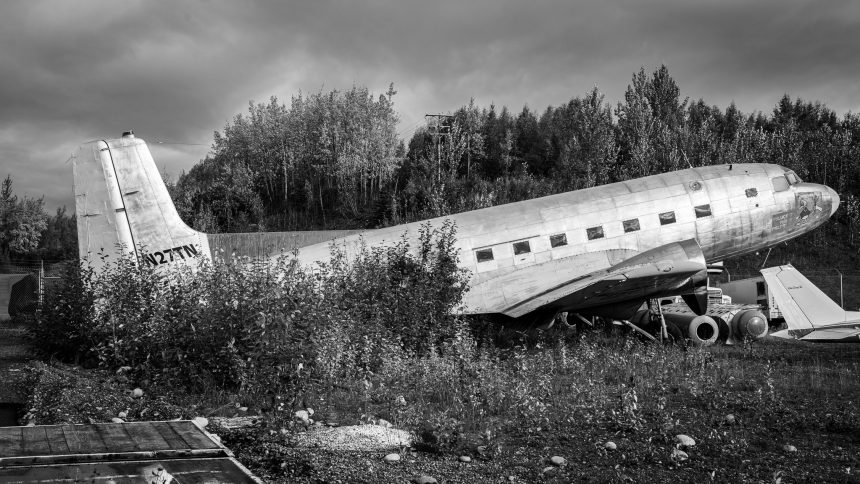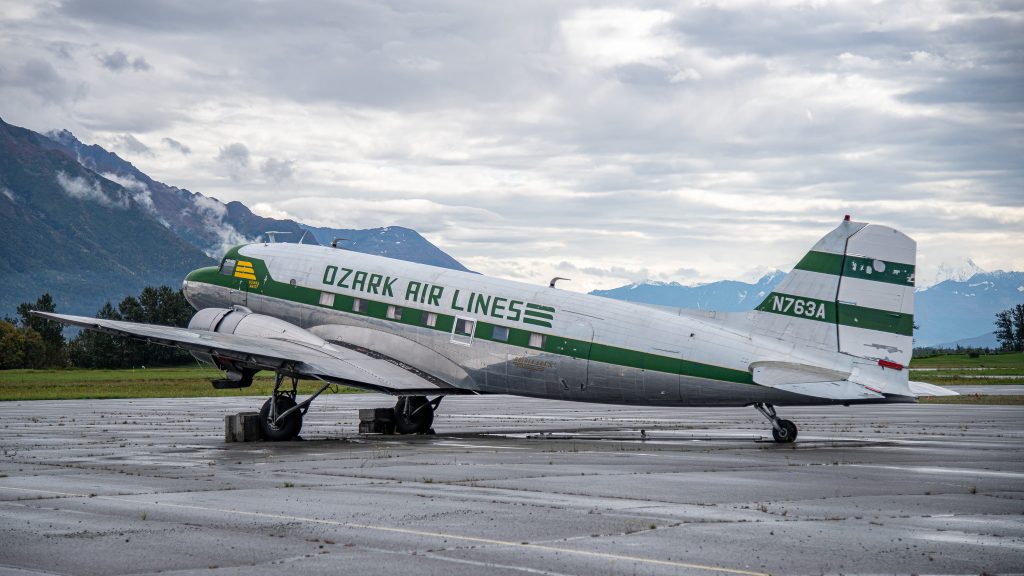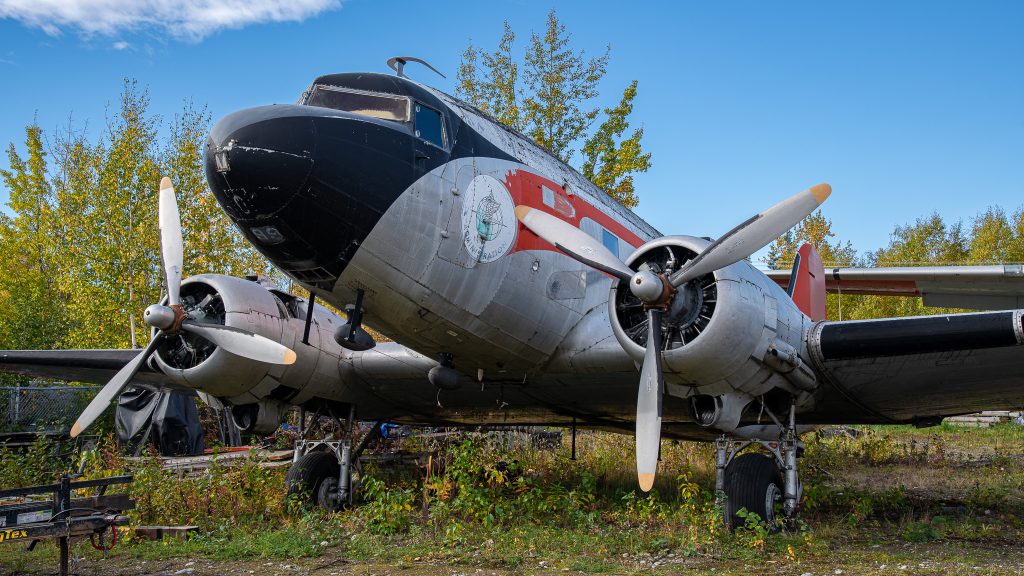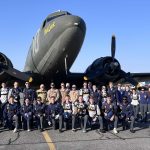Aviation in Alaska is unlike anything else in the world. Whether it is driven by tourism, hunting and gaming, commerce, or simple outright survival, anything goes in America’s 49th state. This is especially true at Ted Stevens International Airport (ANC) in Anchorage where within the span of just 30 minutes, almost regardless of weather, you’ll see float planes of every ilk sharing the sky with 747s and C-47s.

When you peer in the remote recesses of ANC and the countless smaller airports and airstrips scattered throughout the state, you’ll also see that in Alaska they don’t scrap aircraft. They are either set aside and used for parts or simply left to become derelict and consumed by nature. Arguably, the two most numerous types of vintage aircraft you’ll find sitting out in the weeds are Douglas DC-3s and DC-4s and -6s. In September 2024, the author traveled to Alaska on a photography trip sponsored by Centre of Aviation Photography (COAP), during which we came across a quartet of Douglas derelicts.
The first such aircraft was “discovered” at Warren “Bud” Woods Palmer Municipal Airport (PAAQ) in the small town of Palmer, about 45 miles north of Anchorage. The purpose for this visit was to document the restoration progress of the Consolidated C-119 based on the north side of the field. However, as we rounded a hangar we were greeted by a beautiful, albeit propless DC-3, in Ozark Airlines livery. This aircraft was one of 219 military C-53s (equivalent to a DC-3A) built at Douglas’ Santa Monica plant. Completed on March 11, 1942, as C-53 USAAF #41-20124 it was transferred to the Navy, as R4D-3 BuNo 05078 and assigned to Fleet Logistics Squadron One (VR-1). It later became a training aircraft serving at Naval Air Stations (NAS) Jacksonville, New York, and Norfolk, and lastly Marine Corps Air Station Cherry Point, North Carolina.
In 1947, she went to work for Continental Airlines (NC73726) and Southern Airlines (N70SA) from 1949 to 1966 when it was acquired by a Texas oilman for transporting personnel and equipment to the oil fields. During this period the aircraft was used by Preston Smith during his successful campaign for Governor of Texas and to transport Princess Grace of Monaco to a social event at Coffield’s ranch. After Coffield’s death in 1983, the aircraft was purchased by the Prairie Aviation Museum (PAM) in Bloomington, Illinois.
In August 1985, Ozark Air Lines entered into an agreement with PAM to restore N763A in original 1950’s-era Ozark colors for the carrier’s 35th anniversary. The aircraft was a huge hit with employees during the open house in October 1985 and even though Ozark was acquired by TWA the following year, it toured the airshow circuit for the next decade. In 2009, Six Three Alpha was sold to an outfit in Marathon, Florida where it remained until 2016, when she was flown to her new home in Alaska. It appears that the last time N763A flew was in October 2019 and her future is uncertain.
Located west of the town of Wasilla is Wasilla Airport (PAWS) and on the edge of the field at the intersection of Beacon St and Aviation Ave is what was originally TC-47B USAAF #44-77035, which was transferred to the Navy and became R4D-7 BuNo 99857. It was later rebuilt as an R4D-8 BuNo 43332 (Super DC-3) and last stationed on Midway Island. This aircraft (N27TN) was flown up from the lower 48 over ten years ago to serve as a parts aircraft. Considering it exposure to the harsh Alaskan weather it appears to be in good condition despite missing it #1 propeller and its #2 engine. The Phlucked Phrom Phlorida nose art is noteworthy.
Just up the road from Wasilla Airport is the Museum of Alaska Transportation and Industry (MATI) where we found C-47 USAAF #41-18482 in deplorable condition. It was delivered to the USAAF in July 1942, but later transferred to the Civil Aeronautics Administration (CAA) as NC5. When the CAA became the FAA in 1958, the registration was changed to N99. In July 1977, the aircraft was transferred once again, this time to United States Department of Agriculture and re-registered as N101Z.
At some point the aircraft was acquired by Woods Air Fuel, a subsidiary of the Palmer-based Woods Air Service, where it retained its USDA paint scheme. In its history, there are reports that it was damaged in McGrath, Alaska in January 1967 and located at Palmer Municipal in July 1989. When it was flown to Wasilla and parked outside MATI is unknown, but it has been there for at least two decades.
The final derelict we visited is perhaps the most famous wreck in Alaska- DC-4 N82FA, which is located on the edge of the woods at Nenana Municipal Airport (PANN), 55 miles west-southwest of Fairbanks. On January 7, 2007, this Brooks Fuel Douglas was on a flight from Fairbanks to Nixon Fork Mine with 3,000 gallons of heating oil onboard when the #2 engine caught fire forcing the crew to make an off-airport landing near Nenana. The aircraft was disassembled and moved to PANN where it was cannibalized and abandoned in situ. Even though the airport is visible from Alaska 3, the Douglas itself is hidden from view and largely forgotten by all but a few hearty aviation enthusiasts, such as our COAP group. If there are any VAN readers that can fill in the gaps in the histories of these four aircraft, please leave us a message.






































